
views
- Wash your car, take it to a garage or shady area, and wait for the weather to be 55–85 °F (13–29 °C) before waxing your vehicle.
- Use the foam applicator that came with your product and apply the wax using gentle, overlapping circular motions.
- Buff the car when you’re done and use a microfiber cloth to remove excess wax.
- Polish your car when you’re finished with the wax to give it a sleek, shiny finish.
Prepping Your Car for Waxing
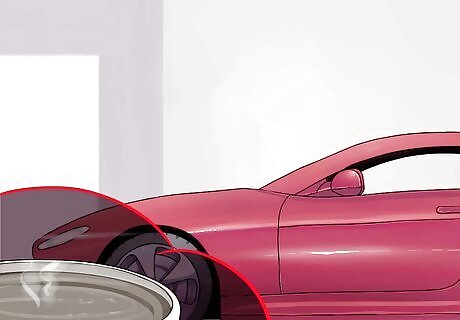
Wash your car. Using mild soap and water, thoroughly clean your car in preparation for waxing it. The cleaning process is an important step in preparing your car. This also helps to enhance the longevity of the wax protection and achieve a smooth, glossy finish for your vehicle. You want your car to be completely clean and completely dry before waxing. Wax has a tougher time adhering to dirt and moisture than it does the spanking clean surface of a clean car.
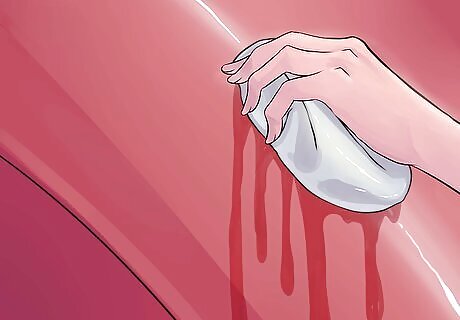
For dull, scratched, or otherwise damaged paint, consider using rubbing or polishing compound before waxing. Rubbing and polishing compounds are slight abrasives that actually remove a fine layer of clear coat from your vehicle in order to achieve a smooth layer and even coloring. Polishing compound is less abrasive than rubbing compound, making it better suited for pre-wax treatment. Use a damp microfiber cloth to rub the polishing compound lightly over the entirety of the car and then another microfiber cloth to remove the compound.
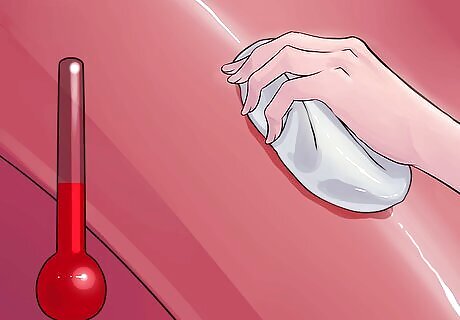
Wax in conditions between 55° and 85° F (13°C and 30°C), preferably on the cooler side. In very hot weather, the wax dries instantly as soon as you apply it to the car, making buffing quite difficult. This can also make the wax difficult to remove once applied. In colder weather, the wax is hard to move around and apply to the car itself.
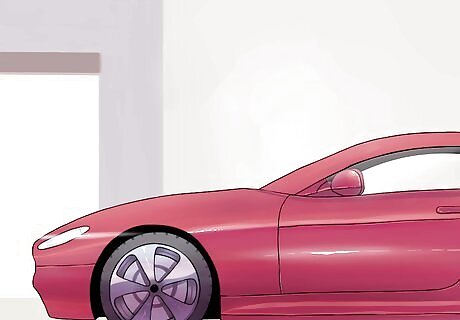
Wax in a garage, preferably out of direct sunlight. Mostly for temperature reasons (addressed above), it's best to wax your car indoors so that the rays of the sun don't interfere with the waxing. Sunlight can heat up the car in addition to leaving waxy residue on the car which becomes difficult to remove. If you can, wax in your garage, where the temperature is more or less controlled and the rays don't penetrate. If you don't have a garage, find a spot in the shade of a tree or building to work, pick an overcast day, or work in the cool of morning or evening.
Waxing Your Car
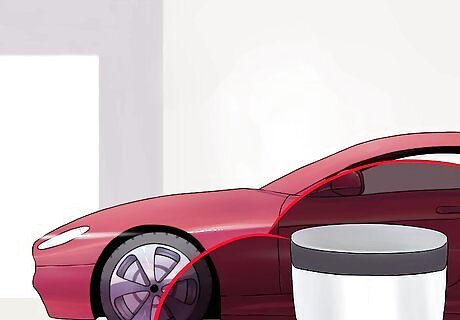
Choose a wax that you will use on your car. Ideally, the ones containing genuine carnauba prove to be the best products although they are usually a little more expensive. But there are other kinds of wax that you may also want to know about: "Cleaner wax" is generally a little less expensive, but also proves to be harsher. Cleaner waxes often remove clear coat from your car. If you're using this kind of wax on your car, consider removing the polishing step from your pre-wax maintenance. Spray waxes go on easier, but of course there's a downside: They don't last nearly as long. Tested varieties of spray waxes tended to last only a couple weeks before succumbing to the elements.
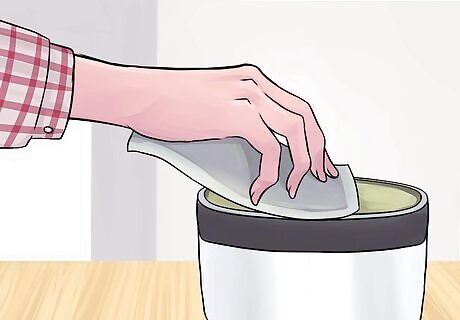
Place some wax onto the foam applicator that came with the wax. A silver dollar-sized amount should work fine for each 2' x 2' (60cm x 60cm) section of your car. Just to be sure, check the manufacturer's directions as a reference. How much wax should you use? Err on the side of less, not more. Applying too much wax is a common mistake. It creates more waste, is harder to remove, and leaves gunky buildup. A thinner layer of wax actually bonds better with the surface of the car. If your car wax didn't come with a foam applicator, try a damp sponge. It's not the greatest applicator, but it'll do the job in a pinch. It should go without saying, but if you decide to use a sponge, don't use it to clean dishes afterward.
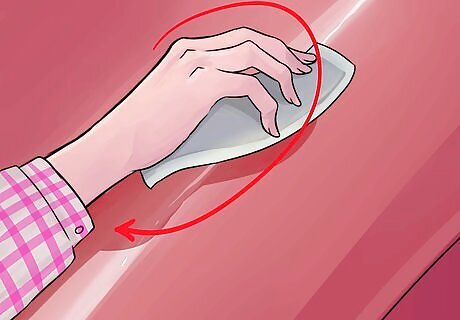
Using gentle and overlapping circular motions, apply the wax evenly over a small section of the car. Divide your car up into sections and wax each section at a time, applying more wax as needed. Gentle, overlapping strokes — between 3 and 5 lbs of pressure — will do the job just fine.
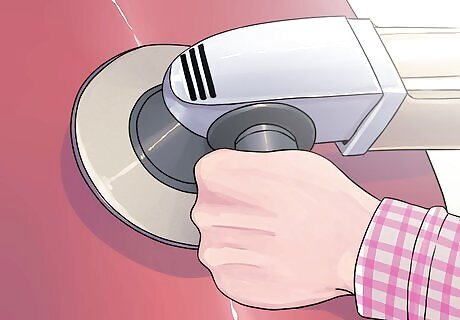
Buff the car (optional). Use a high-speed, dual-action, or random orbital buffer to apply more wax to the car and buff out any imperfections. Set your buffer at a low speed, apply wax to the buffing pad or directly onto the car, and buff the car holding the buffer evenly on the surface of the car. Apply more wax as needed

Let the wax sit for a few minutes per the car wax instructions. After waxing and buffing, wait as long as the wax manufacturers recommend. This may require waxing or buffing in sections, stopping, and then wiping away wax. Here's a good way that you can tell whether the wax is ready to come off. Make a swipe in the wax with your finger. If it smears, the wax isn't ready to come off yet. If it's clear, you're ready to take the wax off.
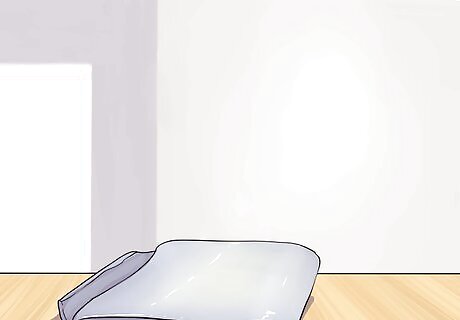
Using a microfiber cloth to remove the wax and give your car the perfect polish. Use one side of the cloth to wipe away any wax on the car in circular motions. When the cloth begins to drag, that's a sign that the cloth has too much buildup. Flip the cloth and continue wiping away the remaining wax for a smooth finish.

Continue polishing the rest of car to a high shine. Be sure to wipe off any remaining wax residue. You're done, amigo!
Making the Most of Your Wax
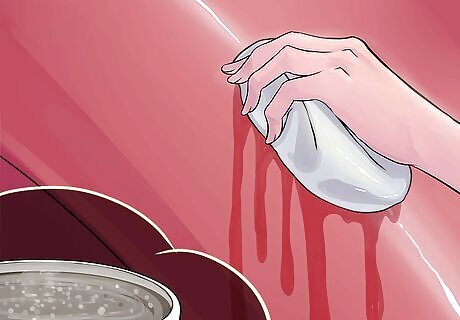
Make sure you wash your car with a mix designed specifically for cars with wax finishes. Of course, you can use regular old mild dish detergent on your car if you prefer, but that won't do much in the way of preserving your beautiful wax finish. Use a wash designed for wax finishes to get the most mileage out of your wax, and then reapply the wax as needed when it wears off.
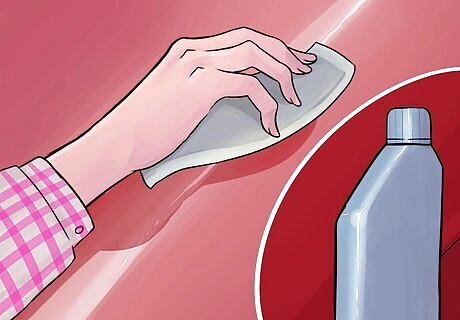
Double-wax for every gloss and shine. Many professionals double-wax for a deep, enduring finish. Start off with a synthetic wax, buffing it up for extra shine. Wipe away, and then finish with another layer of carnauba wax. Polish for the kind of high shine often found at car shows.
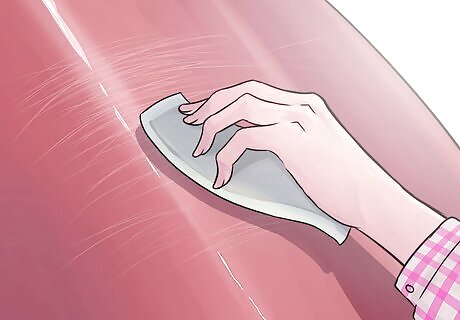
Eliminate streaks. If after you've removed the wax you're still experiencing streaking, here's one tip to help you out. Fill a spray bottle with distilled water. Add a teaspoon of rubbing (isopropyl) alcohol to the bottle and mix vigorously. Lightly mist the car where the stubborn streaks are appearing and wipe away with a microfiber cloth.
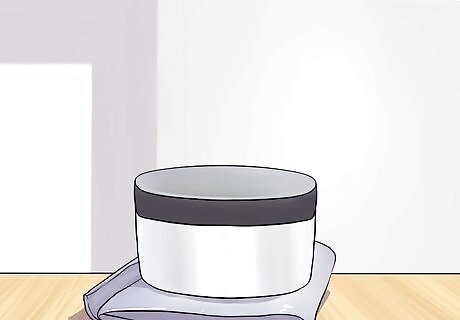
Know that your wax finish may wear off sooner or later than the manufacturer suggests. This is another way of saying that each car is different, and that knowing when to wax again will depend on your eyes and touch, not on what the manufacturer says. Manufacturers have a financial incentive to overestimate how much you'll need to use your wax product. They'll often err on the side of applying more often, because it means you'll go through product quicker, and ultimately spend more money. On the other hand, some waxes won't have a long half-life on certain cars and may need to be reapplied with greater frequency.

Do not apply wax to a car with matte finish. Cars with matte finishes should not be waxed. Shine agents are a big no-no for cars with a matte finish.



















Comments
0 comment